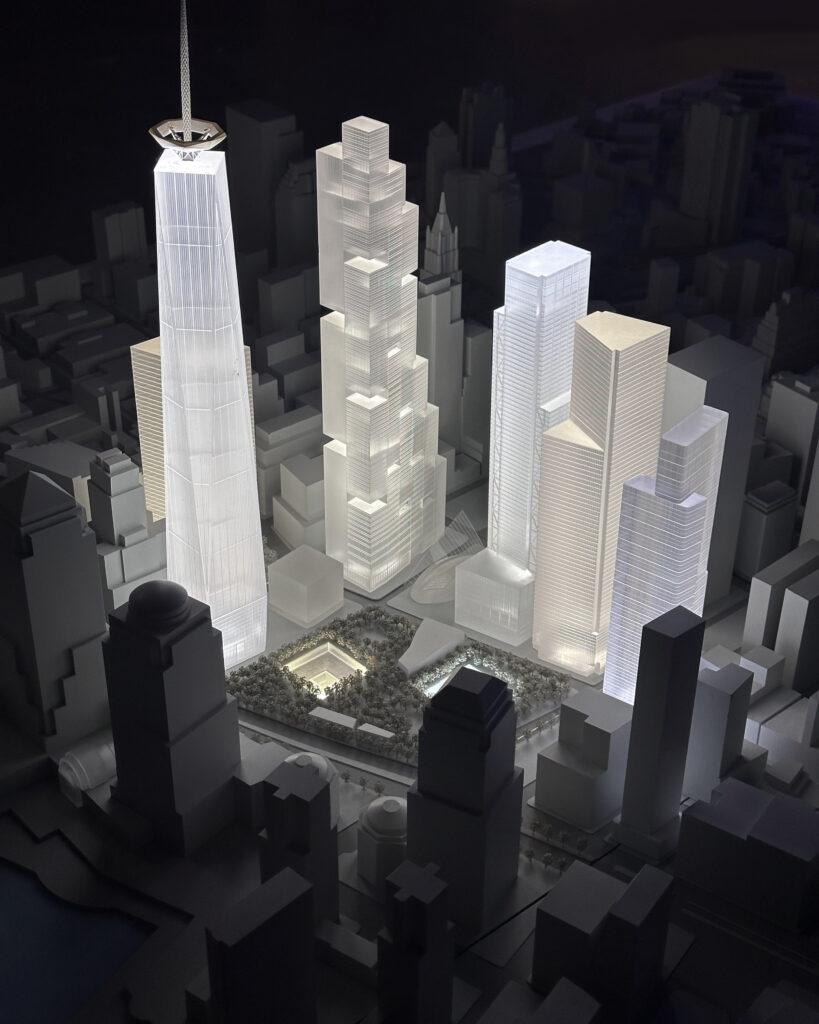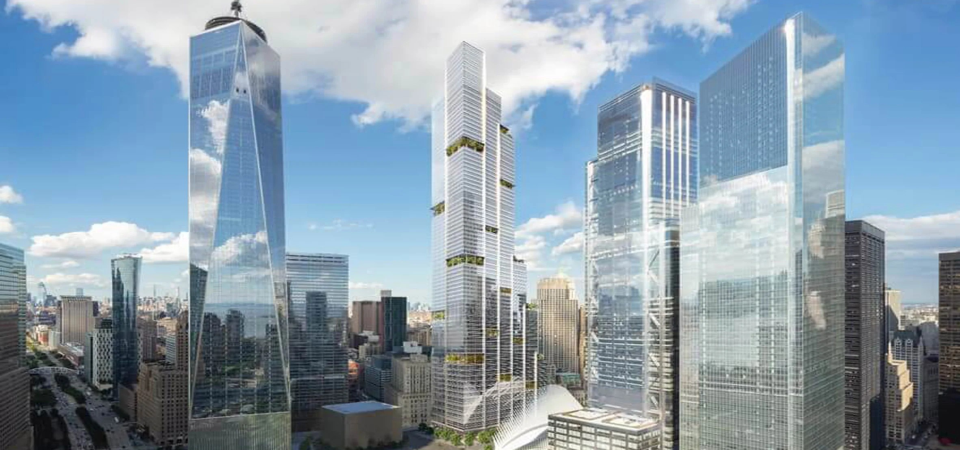The latest redesign of 2 World Trade Center by Foster + Partners signals a measured, almost introspective addition to the Manhattan skyline. As the final tower slated to complete the World Trade Center master plan, the new design bears the weight of historical reverence and urban symbolism while addressing 21st-century demands for flexible commercial office space, sustainable architecture, and enhanced public integration.
Form and Urban Context
Foster’s updated tower stands at 1,230 feet with 62 stories, scaling down previous versions to more seamlessly align with surrounding landmarks like One World Trade Center and 3 World Trade Center. This contextual awareness helps it blend with the skyline while offering a dignified presence. The stepped setbacks on the eastern elevation and staggered landscaped loggias on the western side deliver 12,000 square feet of terrace space, incorporating green building elements that speak to growing interest in biophilic design.
Façade and Material Language
The new curtain wall design is a refined assembly of horizontal louvers and metal-wrapped perimeter columns, breaking the visual monotony typical of glass skyscrapers. The structure reflects a more unified architectural identity by replacing the cut-out loggia volumes from previous proposals with a continuous curtain wall on the south elevation. The smooth, glassy face facing the Oculus transit hub provides a calm counterpoint to Santiago Calatrava’s design’s dramatic curves and complexity.
Interior Logic and Tenant-Centric Design
In response to the growing demand for Class A office space with wellness-centered amenities, the design incorporates a double-height ground-floor lobby with MTA access, flexible workspace layouts, an indoor/outdoor auditorium, a fitness and wellness center, and reservable conference rooms. These features make it a competitive option for major tenants searching for health-conscious, energy-efficient commercial real estate in Lower Manhattan.
From Bold to Balanced: Architectural Evolution
The latest iteration contrasts with Bjarke Ingels Group’s 2015 stacked-box proposal, which aimed for iconic disruption. However, Foster + Partners’ approach leans into quiet confidence and harmony with its surroundings. It marks a philosophical shift in skyscraper design: from iconic landmarks toward integrated, environmentally responsive urban buildings that support long-term functionality.
Conclusion
Foster + Partners’ redesign of 2 World Trade Center embodies a mature and contextually grounded response to the architectural and commercial needs of post-pandemic New York. It reflects the city’s evolution, where prestige still matters, but practicality, resilience, and sustainability increasingly define success. By embracing green building principles, respecting historical context, and offering tenant-first design solutions, the tower becomes more than a structure—it becomes a statement about the future of urban office space. What do you think of the design? Comment below.
References and Sources
- New York YIMBY. “New Design Revealed for 2 World Trade Center in Financial District, Manhattan.” May 2, 2025. Link
- Wikipedia. “2 World Trade Center.” Link
- WTC Official Site. “2 World Trade Center.” Link
- Curbed. “2 World Trade Center’s New Design Is Pretty Good (for 2007).” February 2, 2022. Link
- Foster + Partners. Studio Projects. Link
- ChatGPT 4.0
#2WorldTradeCenter, #FosterAndPartners, #NYCArchitecture, #WorldTradeCenterDesign, #ManhattanSkyline, #GreenBuilding, #OfficeDesignTrends, #SkyscraperArchitecture, #UrbanDesign, #SustainableArchitecture









No comments so far!